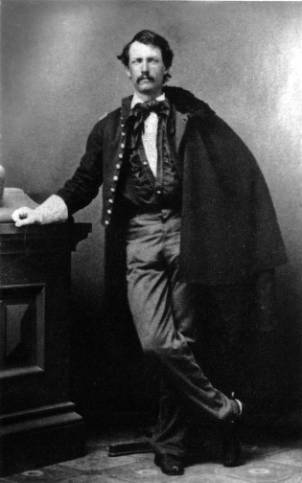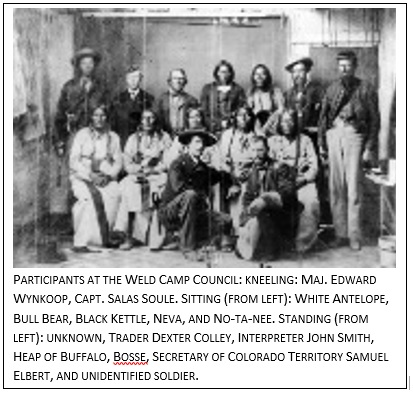 Today we received word that Maj. Edward Wynkoop was relieved of duty as commander of Fort Lyon. Two months ago, Maj. Wynkoop obtained the freedom of four Indian prisoners before bringing the Cheyenne and Arapaho Indian leaders to Denver City to have an Indian Council with Territorial Governor John Evans and Col. John Chivington.
Today we received word that Maj. Edward Wynkoop was relieved of duty as commander of Fort Lyon. Two months ago, Maj. Wynkoop obtained the freedom of four Indian prisoners before bringing the Cheyenne and Arapaho Indian leaders to Denver City to have an Indian Council with Territorial Governor John Evans and Col. John Chivington.
Read Article as PDF: Volume 14: Ned Wynkoop Removed From Command of Fort Lyon
These talks gave every indication that peace had returned to the territory. The September 29th issue of the Rocky Mountain News proclaimed Black Kettle and the chiefs would do their utmost “to induce their tribes to lay down their arms; a consummation devoutly to be wished for.” Since this council, the Indian unrest has decreased significantly, although with the removal of Maj. Wynkoop, the future peace between settlers and Indians appears fragile.
 Maj. Wynkoop has led a colorful life. Commissioned by Kansas Governor James W. Denver as sheriff of Arapahoe County, Sheriff Wynkoop arrived in the newly formed town of Auraria (now Denver City) with William Larimer in November, 1858.
Maj. Wynkoop has led a colorful life. Commissioned by Kansas Governor James W. Denver as sheriff of Arapahoe County, Sheriff Wynkoop arrived in the newly formed town of Auraria (now Denver City) with William Larimer in November, 1858.
During those early years, Wynkoop became known as a “Bad Man from Kansas” due to his association with gambler and southern sympathizer, Charlie Harrison. He straddled the law for several years, but eventually settled down with Louise Matilda Wakely, one of the Thorne Star Company’s leading actresses. When the United States declared war on the Confederate States, Wynkoop joined the First Regiment of Colorado Volunteers and began his military career.
Wynkoop’s friends like to tell the story of when Wynkoop encountered a drunk Miami Indian woman. The woman charged her horse toward Wynkoop and his friends, repeatedly coming back around until Wynkoop leaped onto a fence and made mocking and offensive gestures at her. She charged him, pulled a pepper-box pistol from her blanket, and pointed it at him. Wynkoop fell off the fence, landed on his back, and rolled away. As she drew a bead on him, he jumped to his feet and ran. Even though the squaw didn’t shoot, his friends have teased him over this incident until he now proclaims, “I have never run away from a Squaw since.”
- Ned Wynkoop and the Lonely Road from Sand Creek, Louis Kraft, 2011.
- Images from the Denver Public Library Digital Collection.
